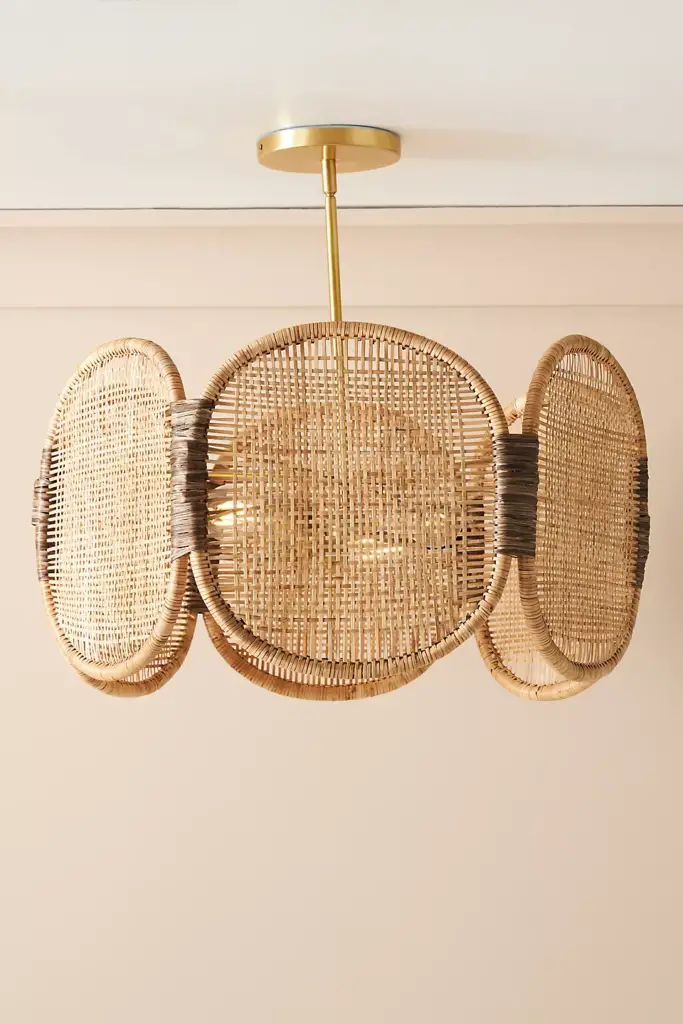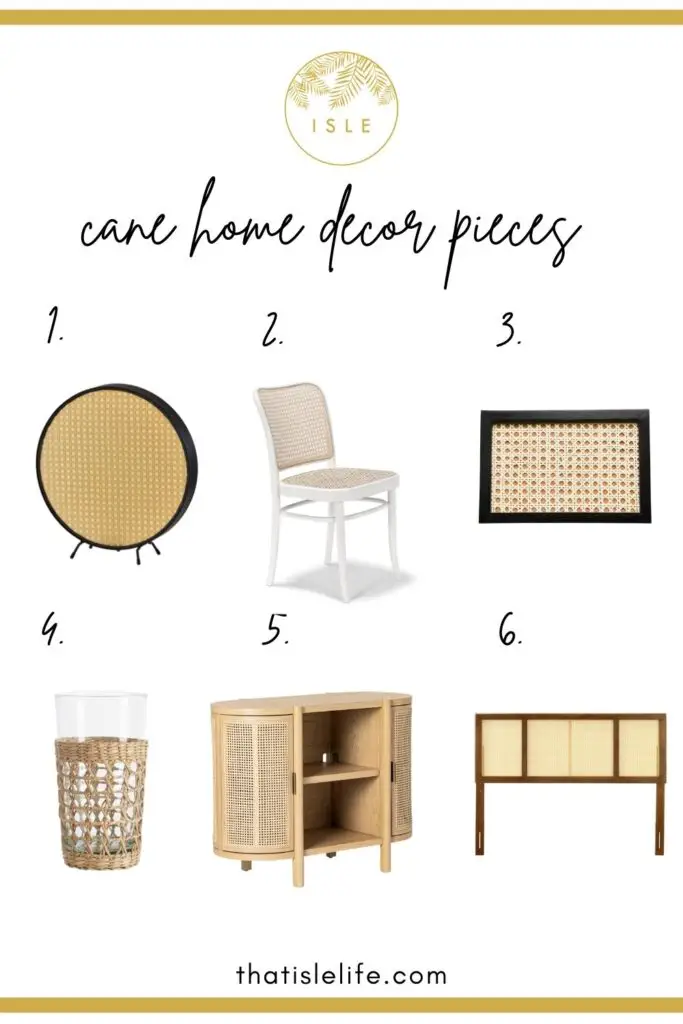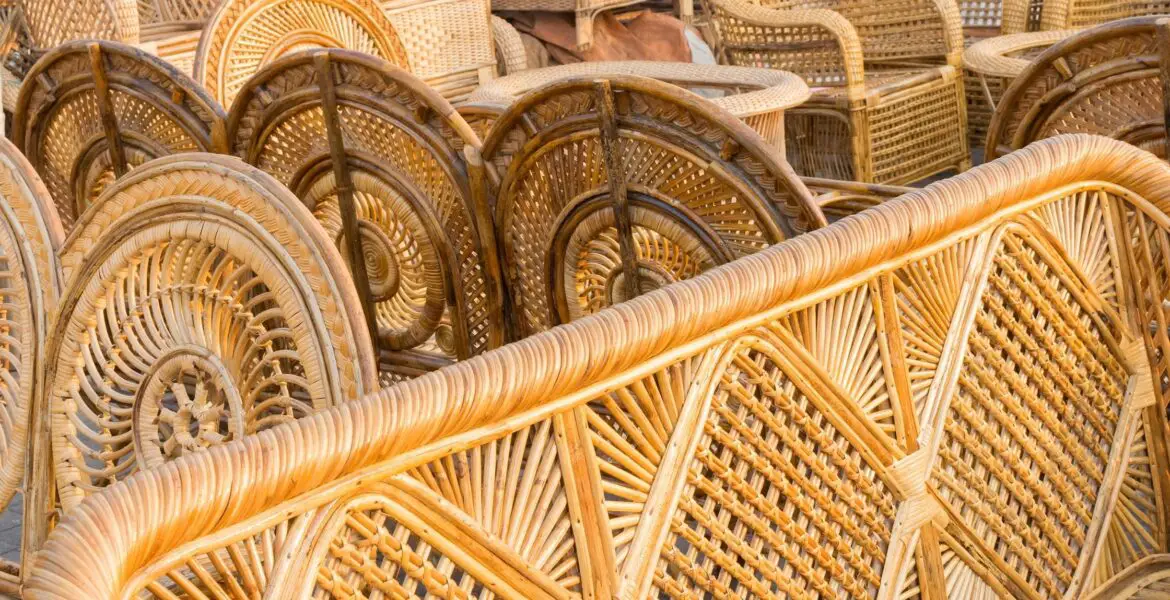People often use rattan and cane interchangeably in home decor. However, have you ever wondered if there is a difference between cane vs. rattan?
As someone who loves bohemian and coastal interiors, I love all things rattan and cane. These organic woven textures have been dominating Pinterest and Instagram for the longest time. I really think this material isn’t going anywhere soon and will be timeless materials that look good in any home.
These materials have gotten so popular that they are often mislabeled in the market. No wonder so many people are confused about cane vs rattan. Myself included!
Just because they are used interchangeably in the home decor realm doesn’t mean they are the same material. Newsflash: they aren’t!
In this post, I will share with you everything I’ve discovered about cane vs. rattan. Read on to find out more about:
- What is rattan?
- What is cane?
- Examples of cane
- Pros and cons of cane
- How to care for cane
- Cane recommendations

Related to Cane vs Rattan:
- Wicker vs Rattan – What’s the difference and why does it matter?
- Blinds vs Curtains: Which Window Treatment Is Better For Your Home?
- Terrazzo vs marble – Which is the better option for your home?
What is rattan?
Rattan is a natural material. According to WWF, rattan belongs to the palm family and is native to the tropical regions of Asia, Australia, and Africa.
What is cane?

According to Curbed, cane is the outer part of the rattan tree, which grows like a vine in thick, winding strands. Cane is produced by peeling the outer part of the rattan tree. In other words, cane is actually part of rattan!
In most cane furniture pieces, you’ll see that cane is actually hand-weaved in a multi-directional pattern. This pattern gives cane its distinct look.
This type of weaving is usually used in furniture applications like a backing of a dining chair or part of a headboard. On the other hand, the reed from rattan is woven to make large furniture pieces.
Because cane is part of rattan, they share many similar qualities like color and finish. However, cane is very lightweight, highly pliable, and stronger than rattan.
Examples of cane

- Furniture accents
- Art
- Wall panels
- Home decor items
Pros of cane
Stylish
Cane furniture is always in style because it looks well-crafted and elegant. People adore using cane furniture indoors because it brings color and texture inside a home. Despite its signature webbing pattern, cane is a neutral that complements most interior design styles.
Lightweight
Cane is incredibly lightweight. It is much lighter than solid wood and metal furniture. It is easy to lift and move cane furniture around. This attribute makes cane furniture an excellent choice for both indoor and outdoor use.
Durable
Cane is a very durable material. Cane furniture can easily last up to three decades with proper care and maintenance. Additionally, it is less porous than rattan and can easily repel spillage. This means you can easily wipe down a spill with a dry towel, and liquids will not damage the material.
Eco-friendly
Cane is an eco-friendly material because it is a natural material. Rattan has a fast growth rate, which makes cane a highly renewable material.
Cons of cane
Pricey
While the raw material itself isn’t expensive, cane products like furniture can be pricey because they are usually handcrafted. Furthermore, cane has blown up in popularity recently, which has caused prices to increase.
Less comfortable
Cane is a sturdy and hard material, so it’s naturally less comfortable than plushy fabric sofas. You can, however, increase comfort levels by upholstering a cane chair or by adding cushions.
Loosens over time
Cane is generally durable, but the weaving of cane furniture can loosen over time. You can easily replace loose cane with new cane webbing or send it to a professional for repairs.
You can read about the pros and cons of rattan here.
How to care for cane

Keep it out of rain and direct sunlight
Just like rattan, it is advisable to keep your cane and rattan furniture away from rain and direct sunlight. Exposure to direct sunlight will dry out and cause your cane furniture to discolor and crack.
Having your cane pieces sitting in the rain will also eventually lead to mildew. Save your cane furniture for indoors, and use resin or synthetic wicker furniture for outdoors.
Moisturize it occasionally
It’s important to moisturize your cane pieces from time to time if you want them to last longer. Whenever possible, keep your pieces in a room where a humidifier is present. On the contrary, keep your cane furniture in a covered or shaded area if you’re living in a humid climate.
If both options are not possible, all you need to do is to give your cane pieces a little TLC. Wipe them down once a month using a diluted oil or glycerin-based soap. After that, wipe any residue with a rag. Avoid spraying the top side and let your pieces fully dry.
Use a cushion on cane chairs
Using a flat cushion will not only add a little comfort but also helps to protect the seat. This is because a cushion will disperse weight evenly over the surface. This eases the pressure on the center of the seat, which prevents the cane from breaking.
Seek professional help for repairs
If your cane furniture is in bad shape, seek a professional’s help to repair it. Repairs are not cheap, but it is worth every penny considering the lifespan of a cane piece. As with many home decor materials, prevention is a priority. Treat your cane furniture right from the beginning, and you should be able to pass them down to your future generations!
Cane recommendations
Like the cane aesthetic but not sure where to start? Pick one item from my round-up of my favorite cane pieces.
*Disclosure: This post may contain affiliate links that are at no additional cost to you, and I may earn a small commission if you purchase any products via my links. I only recommend products that I would use myself, and all opinions expressed here are my own. Read the full privacy policy here.

- Round Black Metal And Cane LED Shane Accent Lamp, $179.99
- Wood Chair with Cane Backing, $290
- Cane Organizer Tray, $26
- Cane Recycled Drinking Tall Glass, $14
- Cane Door Console With Shelves, $250
- Cane Panel Headboard, $244.88
I hope this post has cleared up any confusion you may have about cane vs. rattan! Both cane and rattan furniture add a beautiful bohemian touch to any home. Whichever you choose, always treat it with care and respect so it will last for ages.
Do you have any rattan or cane pieces at home? Tell me in the comments below!

